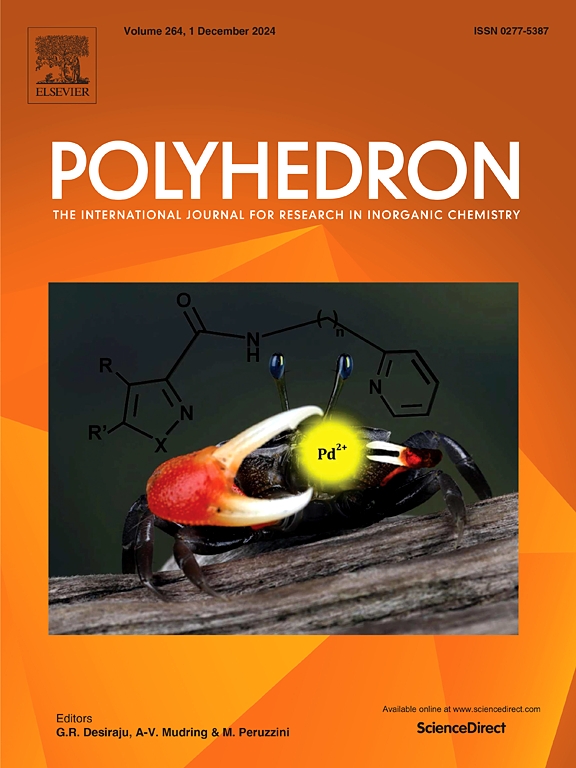Tb3+/Eu3+共掺杂SrGdGa3O7荧光粉的合成及多色可调发光性能
IF 2.4
3区 化学
Q2 CHEMISTRY, INORGANIC & NUCLEAR
引用次数: 0
摘要
制备了一些Tb3+/Eu3+掺杂的SrGdGa3O7 (SGGO)荧光粉,通过添加敏化剂实现了多色可调性。实验结果表明,掺杂离子分布均匀,未检测到杂质相。在sggo基荧光粉中,Eu3+离子作为激活剂,其最佳发光跃迁能级为5D0→7F4。以Tb3+离子作为敏化剂,在一定浓度下,随着Eu3+含量的增加,发光颜色由绿色→橙色→红色转变。衰变寿命曲线分析表明,共掺杂的SGGO荧光粉发生了Tb3+→Eu3+的能量转移,其机制为四极-四极相互作用。本文研究了所涉及的比能量传递过程。确定Eu3+的最佳含量为0.03。在375 nm激发下,含有0.06 Tb3+和0.03 Eu3+的SGGO基荧光粉的CIE坐标分别为(0.5000,0.4397)。本文章由计算机程序翻译,如有差异,请以英文原文为准。

Synthesis and multi-color tunable luminescence performance of Tb3+/Eu3+ co-doped SrGdGa3O7 phosphors
Some Tb3+/Eu3+ doped SrGdGa3O7 (SGGO) phosphors were fabricated, achieving multi-color tunability through the addition of a sensitizer. The experimental results indicate that the doped ions are uniformly distributed, with no impurity phases detected. In SGGO-based phosphors, Eu3+ ions serve as activators and exhibit an optimal luminescence transition level of 5D0 → 7F4. When Tb3+ ions are used as the sensitizer and at a specific concentration, the luminescence color transition of green → orange → red as the content of Eu3+ enhances. Analysis of the decay lifetime curves reveals that Tb3+ → Eu3+ energy transfers occur in the co-doped SGGO phosphors, with the mechanism identified as quadrupole–quadrupole interaction. This article investigates the specific energy transfer processes involved. The optimum content of Eu3+ is ascertained as 0.03. Under the excitation at 375 nm, the SGGO based phosphor containing 0.06 Tb3+ and 0.03 Eu3+ exhibits CIE coordinates of (0.5000, 0.4397).
求助全文
通过发布文献求助,成功后即可免费获取论文全文。
去求助
来源期刊

Polyhedron
化学-晶体学
CiteScore
4.90
自引率
7.70%
发文量
515
审稿时长
2 months
期刊介绍:
Polyhedron publishes original, fundamental, experimental and theoretical work of the highest quality in all the major areas of inorganic chemistry. This includes synthetic chemistry, coordination chemistry, organometallic chemistry, bioinorganic chemistry, and solid-state and materials chemistry.
Papers should be significant pieces of work, and all new compounds must be appropriately characterized. The inclusion of single-crystal X-ray structural data is strongly encouraged, but papers reporting only the X-ray structure determination of a single compound will usually not be considered. Papers on solid-state or materials chemistry will be expected to have a significant molecular chemistry component (such as the synthesis and characterization of the molecular precursors and/or a systematic study of the use of different precursors or reaction conditions) or demonstrate a cutting-edge application (for example inorganic materials for energy applications). Papers dealing only with stability constants are not considered.
 求助内容:
求助内容: 应助结果提醒方式:
应助结果提醒方式:


